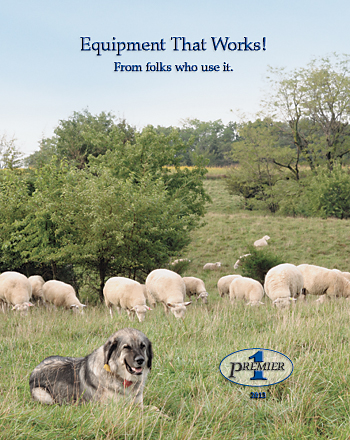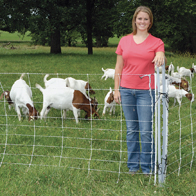|
MESSAGE FROM THE OWNER
Are organic, natural, and sustainable yesterday's food labels?
Yes, they might be—because:
| 1. |
The recently released Stanford research study weakened the value of the "organic" label in the minds of some consumers. The Stanford study concluded that there is little if any nutritional difference between organic and conventionally raised food. Stanford's conclusions are the subject of much debate just now. No matter who is right and wrong there's seems to be little doubt that the national attention give to the Stanford study has reduced the prior credibility of an "organic" label and, by extension, also weakened both natural and sustainable labels.
|
| 2. |
The definitions of all 3 labels (organic, natural, and sustainable) are difficult to define. Consider this:
Nearly all food, be it from mega-farms that rely heavily on every form of technology or from small pesticide-free farms/gardens, is organic and natural in that it is derived from plants or animals.
What about "sustainable"? I'm told that to some stores and chefs it's a new description that works (sells product). My problem is that I've never seen a definition for "sustainable" food that stands up to critical analysis. The most aggressive attack on this label that I've encountered was by Jamie McWilliams in his April 2012 article in The New York Times, "The Myth of Sustainable Meat." I don't agree with all that McWilliams expresses—but there's no denying that such articles (expect to see more) do gradually undermine sustainable as a label.
|
|
No, they aren't—because:
All 3 labels, though imperfect, still have value because they suggest to consumers that:
| • |
The food source of products with these labels is a farm, ranch or garden whose concern with profitability and efficiency is balanced by a concern for the consumer and the ecosystem. Mega-farms may have the same mind-set but the average consumers are less likely to believe this as so.
|
| • |
The food is less likely to have pesticides on it if a vegetable or fruit and less likely to have had its growth enhanced with extra hormones or antibiotics if animal in origin. (Whether the concerns re. pesticides, hormones and antibiotics are as valid as some claim is not the focus of this essay. The simple truth is that the concerns exist.)
|
| • |
For an array of reasons (best addressed in a separate note) food thus labeled is likely to taste better even though it may not have more nutrients in it than conventional food. By the way the Stanford study’s "no more nutrients and thus not worth more" argument bemuses me—given the nation’s obesity crisis. Wouldn’t consumers trying to diet be better served with food that contains less nutrients?
|
Conclusion: It's my sense that producers who need to compete with the low-cost food from super-efficient mega-farms and mega-stores should move away from reliance on organic, sustainable and/or natural as descriptive labels and move toward statements, stories and labels that suggest or express:
| • |
Extra flavor (if you make this claim it's important that it be true) |
| • |
Less artificial hormones |
| • |
Less antibiotics |
| • |
Less pesticides |
| • |
Uniqueness in some way (variety, shape, color, taste) |
| • |
Concern for the ecosystem |
| • |
The personal story of the producer |
The last point—the personal story of the producer—may be the strongest one of all. Why? It’s my sense that affluent consumers who are able to pay extra for food will do so more willingly if there is a name and a fascinating history attached to it.
By the way, such food sources need not be small. I know of a large Western sheep rancher (4000 ewes) who sells nearly all of his lambs at a premium through Whole Foods. They can do this because the ranch history, production system and lambs fit almost all of the bullet points listed above.
Best Wishes To You All,
Stan Potratz, Owner
COMING SOON
2013 "Equipment That Works!" catalog

Look for this annual catalog in your mailbox starting the third week of October.
Your friends at Premier
|
Start watching your mailboxes for Premier's 2013 "Equipment That Works!" catalog.
This year, in addition to our popular products that have pleased both Premier and our customers for years, we're offering the following new products:
Now available:
Heavy Duty Whisk
Auto Syringe/Drencher (12.5 ml)
EzePak Belt & Holster
Backpack for Drenchers
Manual Drencher (60 ml)
Pickup Haulers
Sheep Bell
Square Bucket (2 gal)
EzeLid
Snap Clip (stainless steel)
Coming soon:
Q-flex Ear Tags
KiwiCrook (double-end crook)
Bottle Rack
Sheep Collars (for Sheep Bell)
Guard Dog Puppy Collar
Guard Dog Collar (X-Large)
Large Lamb Sling
ANNOUNCING
New!
A Guide To All Things Sheep©
A Guide To All Things Sheep
has 9 subsections:
| 1. Highlights |
| 2. How-To's |
| 3. Industry Spotlights |
| 4. Education |
| 5. Features |
| 6. View Points |
| 7. Photo Gallery |
| 8. Recipes |
| 9. Event Calendar |
Each week we add more material. Every 4 weeks we provide a list of the new additions in an email to folks who have signed up for our newsletters. If you have not already signed up for our emails, click here
Look for an email from Premier in your inbox within the next week with the subject line: A Guide to All Things Sheep.
We welcome information from you to add to our Guide:
Sheep Events. Please email complete information to rfishback@premier1supplies.com and in the subject line state "Guide Sheep Event".
Sheep Photos. Please email us your photos with information about the photo to rfishback@premier1supplies.com and in the subject line state "Guide Photos".
PREMIER TIP
Training Goats
to Electrified Netting
 |
For goats, electrified netting is only a pain barrier, not a physical barrier. Netting must be properly electrified for it to properly function. A 3000v pulse is the minimum voltage for containing goats. A determined goat can and will get through netting, though not without receiving several shocks.
Goats must be trained to electrified netting before field use. To do this, set up the netting within a corral or other small fenced-in area that will prevent the goats from getting out in case they jump through the net when they're first shocked. For the first several hours, watch the goats interact with the net to make sure no entanglements occur. Goats are curious animals, and soon each goat will test the fence or watch its flock mates test the fence.
Once the animals are trained, electrified netting can be effectively used in the field. Check the fence 2 to 3 times a day during initial use and at least daily once the flock has settled in.
By Sara McArtor, Premier sales consultant
VIP ARTICLE
Goat Landscaping an Emerging Business Opportunity
Goat landscaping and goats in general are rapidly catching on in the United States. Here's why.
First, goat meat is the most eaten meat on planet Earth. In areas of the world without reliable refrigeration, the meat from a goat will feed several people for several days.
Second, goats prefer to eat brush, shrubs and other plants that many other grazing animals will not attempt, and they thrive on it. Thus goats are a perfect complimentary species to cattle, which prefer grass. With the continued invasion of non-native plants into the U.S., goats are finding an important place, from saving endangered turtles in Pennsylvania to suppressing autumn olive and bush honeysuckle in Iowa to suppressing fire danger in downtown Los Angeles, all by eating brush. It is a win-win!
Goat landscaping businesses (see YouTube's "rent-a-goat" and "rent-a-ruminant" video clips) are thriving throughout the U.S. and springing up in more and more places. The concept is for landowners to contract with goat owners to place temporary electrified fences and enough goats to eat the brush, leave the fertilizer and then move on to the next spot. The concept is ecologically sound, environmentally friendly and can result in significant benefits for both the landowner and the goat owner.
Installing the poly-net electrified fence requires the effort to clear vegetation that might short out the fence. A portable shed to keep goats out of the rain, a feed trough so the goats can be supplemented and kept gentle, and a water trough or two are all the infrastructure needed. Goats drink about 1 gallon per day and will eat about 3% of their weight measured in dry matter or dried vegetation. Green vegetation ranges from 50% to 80% water.
As their first choice, goats eat poison ivy, multiflora rose, locust trees, mulberry and other fruit trees, elm, ash, autumn olive, maple, bush honeysuckle, gooseberry, green briar, any berry vine, grapes, oak, hickory, eastern red cedar, sumac and almost any small tree or shrub. Flowering plants like garlic mustard, goldenrod, teasel, thistles, trefoil and many others are second choice and may at times be preferred. Goats do not prefer grass but will eat some as an energy source even though it will not normally meet their protein requirements.
Goat landscaping is an emerging business so price depends upon what is being done. Is it just goats eating brush or will a "goat wrangler" show up and cut down unwanted trees that are out of the reach of the goat herd? Will there be cleanup afterward, such as stacking and burning or chipping limbs and down trees, or mowing leftover vines, or spraying herbicides to finish killing some of the brush?
Research by North Carolina State University, Texas A&M and Utah State shows clearly that continued goating can kill brush and unwanted weeds in 2 to 3 years.
If you are considering goat landscaping, contact your local USDA NRCS or land grant university extension office for more information of access to their network of experts.
There are a number of different water containers available. Don't be tempted to buy huge water containers for a few birds since they need fresh water daily (or at least every other day).
Jess J. Jackson Jr.
NRCS Grazing Specialist
Fairfield, IA 52556
641-472-8411 Ext. 104
Premier Spotlight
Graphics Department
 (left to right) Rachel, Jody, Joe and Kerrie (left to right) Rachel, Jody, Joe and Kerrie |
The Graphics Department recently wrapped up the Fall Equipment Catalog and will soon start another. Jody, Kerrie, Joe and Rachel are the folks behind the catalogs, newsletters, emails, website content and advertisements placed in more than 20 national publications.
Jody and Kerrie are in charge of the layout and design for all of Premier's marketing pieces. When Joe has trouble with a piece of copy fitting on the page, they know how to make it fit. They also keep Joe and Rachel busy with suggestions for Premier Farm Diary posts, how to's and photos.
Rachel is the photographer. The majority of her mornings are spent out and about on the farm capturing the actions of the sheep, goats, horses, chickens, ducks, geese and guard dogs that reside on the Premier farms. Sometimes Rachel will come in before 7 a.m. and stay after closing time in her quest for the perfect photo lighting. About 95% of the photos used by Premier are photographed on the Premier farms.
Joe is the copywriter. Along with Stan Potratz (Premier's owner), Joe writes the content for the catalogs, website, advertisements, Premier Farm Diary , Facebook posts, emails and even some of the info on the Guide to All Things Sheep. Occasionally Joe is pulled out of the office to help work the flock, bale hay or build fence.
|